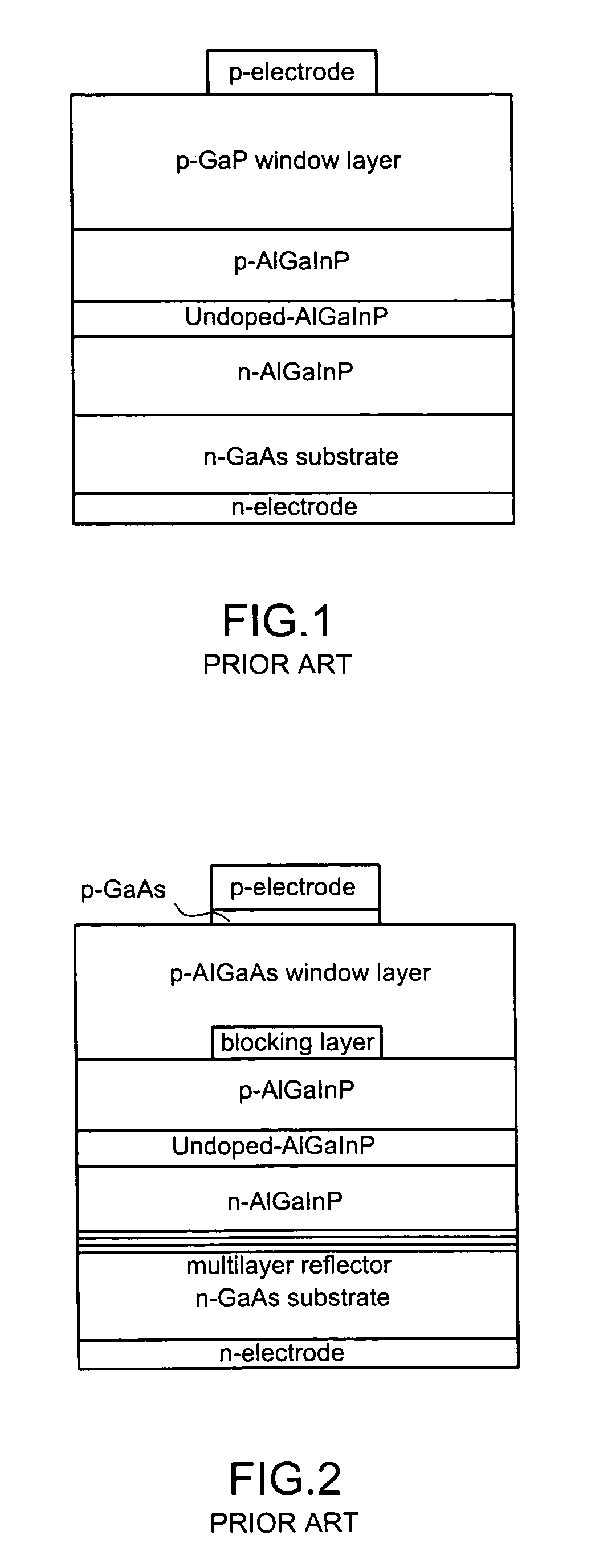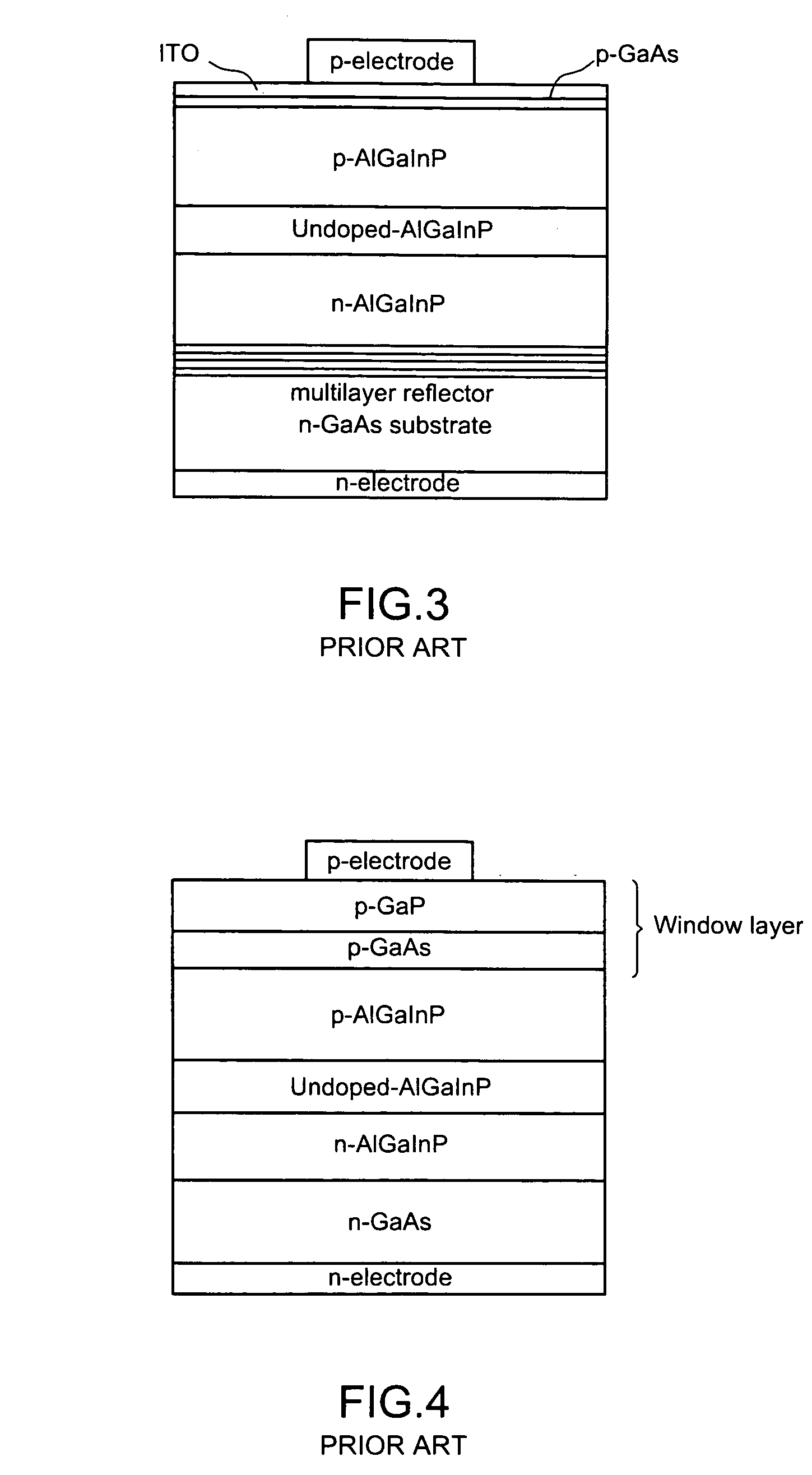Window interface layer of a light-emitting diode
a technology of light-emitting diodes and window layers, which is applied in the direction of laser details, active medium materials, semiconductor devices, etc., can solve the problems of affecting the operational life of components, affecting the efficiency of light emitted from the side of the die, and affecting the lattice mismatch of gaas of 3.6%, so as to improve the film quality of the window layer, reduce dislocation defects, and enhance luminous intensity
- Summary
- Abstract
- Description
- Claims
- Application Information
AI Technical Summary
Benefits of technology
Problems solved by technology
Method used
Image
Examples
Embodiment Construction
[0028]First of all, referring to FIG. 5, a substrate 20 in accordance with the invention is made of n-type GaAs or the like. An AlGaInP double hetero structure 30 lies on the topside of the n-type GaAs substrate 20. The AlGaInP double hetero structure 30 consists of an n-type AlGaInP cladding layer 31 formed atop the n-type GaAs substrate 20, an undoped AlGaInP active layer 32 atop the cladding layer 31, and a p-AlGaInP cladding layer 33 atop the active layer 32. The aforementioned three layers are deposited one after another by use of the Metal-Organic Chemical Vapor Deposition (MOCVD) process. In accordance with the invention, the undoped AlGaInP active layer 32 constitutes an AlGaInP multi-quantum well (MQW).
[0029]A highly doped p-type interface layer 40 is made of GaxIn1-xP (0.6≦x≦0.9) and formed atop the p-AlGaInP cladding layer 33. Thereafter, a p-type window layer 50 made of p-GaP is formed atop the interface layer 40. The deposition of the interface layer 40 is adapted to re...
PUM
 Login to View More
Login to View More Abstract
Description
Claims
Application Information
 Login to View More
Login to View More - R&D
- Intellectual Property
- Life Sciences
- Materials
- Tech Scout
- Unparalleled Data Quality
- Higher Quality Content
- 60% Fewer Hallucinations
Browse by: Latest US Patents, China's latest patents, Technical Efficacy Thesaurus, Application Domain, Technology Topic, Popular Technical Reports.
© 2025 PatSnap. All rights reserved.Legal|Privacy policy|Modern Slavery Act Transparency Statement|Sitemap|About US| Contact US: help@patsnap.com



